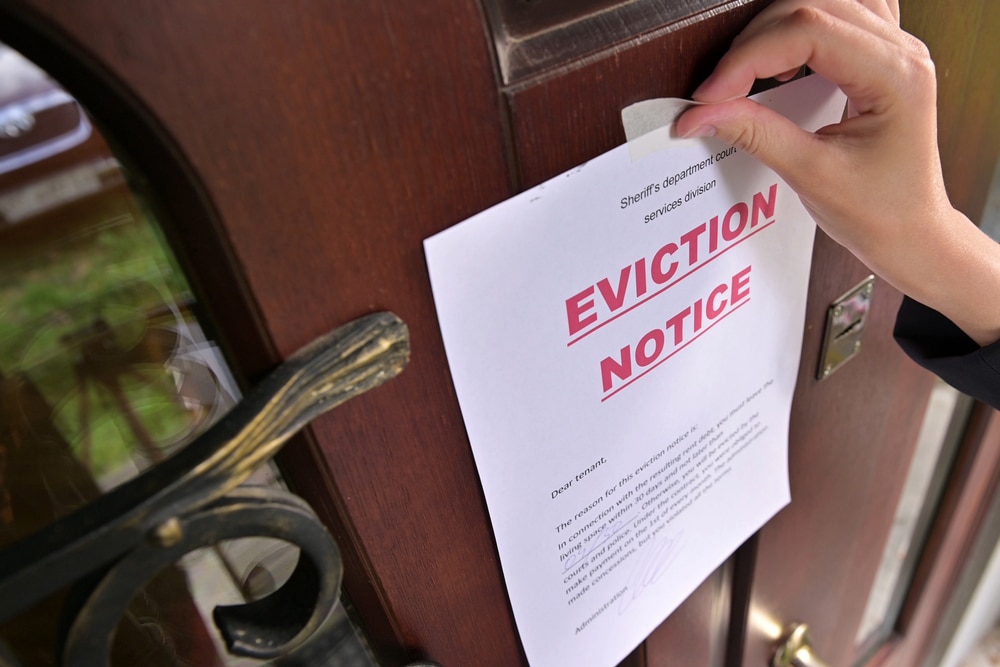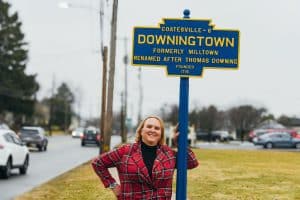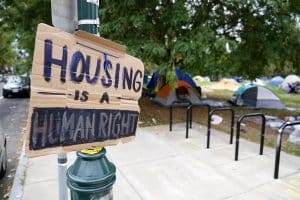Since the spring of 2021, 60,000 U.S. Housing and Urban Development (HUD) Emergency Housing Vouchers (EHV) – 1,507 in Pennsylvania – have been available for persons in desperate need of housing. Now, that short-lived program is coming to an end.
Even with HUD’s inadequate counting, back in January 2021, agencies in the commonwealth – on a single night – identified nearly 10 times that number of people on the street and in shelters, 1,507 vouchers had been a help.
Since then, and despite the influx of EHVs, Pennsylvania’s homeless numbers have gotten even worse. In fact, Bucks County alone could use one third of those vouchers to house the 511 persons experiencing homelessness this year alone. But they can’t. First of all, the funding had targeted placement – distributed to urban areas with large, visible street populations.
Additionally, the vouchers were earmarked for victims of domestic violence, sexual violence, human trafficking and/or chronic homelessness. While Bucks County has these problems, not every person experiencing homelessness shares them.
Besides, while PA started out with 1,507 that number has been going down. EHVs came with a sunset provision. Unlike traditional housing assistance that passes from person to person as individuals get on their feet, if an EHV recipient no longer required assistance, the opportunity was eliminated – not passed on to another person in need.
Now, there’s a third barrier. Like virtually every housing program directed to assist folks with meager resources, the money allocated to EHVs was inadequate to the task. Furthermore, as the pandemic wore on, rents escalated at an alarming rate. And, it turns out, funding for the EHVs – intended to last ten years – won’t make it five.
How’d this all start?
On March 11, 2021, Congress passed and President Biden signed the American Rescue Plan Act, allocating $1.9 trillion to support a flagging nation. Much like the pandemic that left states, municipalities, school departments and individuals struggling to survive – the American Rescue Plan impacted nearly every aspect of American life.
By the time the bill was signed, the worldwide death toll due to Covid-19, approached 2.6 million, with 520,000 (20 percent) of those deaths in the U.S. alone. By March 11, 2021, 9.7 million people remained unemployed – down sharply from the unparalleled 23.1 million – just 11 months earlier – but still three times higher than the national unemployment rate back in February of 2020, before the pandemic shuttered the nation.
In Pennsylvania, proportionately, the numbers were worse. While the federal unemployment rate had recovered from more than 14 percent to 6 percent by March of 2021, Pennsylvania’s rate hovered at 7.8 percent – work places rebuilt workforces slowly even as rents skyrocketed. (In fact, in Bucks County renting a single room apartment costs nearly $2,000 a month, up a whopping 32.5 percent from 2022).
One of the urban areas assisted with voucher was the capitol, Harrisburg, which has a population density six times that of Bucks County and – according to HUDs numbers – has nearly as many persons experiencing homelessness as Bucks County has, in that one municipality alone.
Leah Eppinger, Executive Director of the Housing Authority of Dauphin County, said that her agency received 25 EHVs and has awarded 21 of them. One individual terminated the lease on their own and because EHVs don’t recycle, the county’s allotment has been reduced to 24.
Now, with the funding running out, Eppinger says it’s unclear if the people holding those last three vouchers will actually get homes. “For us, we have 21 lease vouchers and then we have three people who are looking for houses right now with a voucher. Although, we’re not sure what will happen if they don’t find one.”
Last month, Eppinger and all the directors of housing authorities across the nation who have been managing the EHVs received a letter from HUD’s Department of Public and Indian Housing. The letter informed them that, because of higher than anticipated rents, the program would run out of money – soon – probably making it through 2025, and some part of 2026. The letter – you can read it here – reads like an open can of alphabet soup. But it effectively tells housing administrators like Eppinger, don’t sign or renew any leases for the emergency vouchers – that based on prior expenditures, the money just wouldn’t be there.
Vouchers don’t pay 100 percent of the rent. HUD pays a portion of the total due, based on the qualified person’s income. The reason the federal government doesn’t want the housing authorities to renew leases is that, once signed, the agency is obliged to complete the contract. Agencies, Eppinger’s included, are crunching numbers to see how long they can make the final disbursement of the money last.
Eppinger explained that a landlord’s, “Payment contract with the authority is called a half contract. For the length of time that that contract exists, whatever the dates are, the housing authority is responsible for paying that assistance portion of the rent.”
Because of this half contract, the tenant won’t be evicted – at least not right away. “The landlord cannot evict a tenant for the housing authority not paying their portion of the rent so if the contract exists and the lease is still valid, the tenant will be only responsible for their portion of the rent until that contract ceases to exist. At that point it is a landlord’s right to not re-sign with the tenant.”
Suppose the housing authority’s portion of a person’s rent is $600, the landlord may renew the lease if the tenant suddenly has the wherewithal to pay rent in full, including the housing subsidy. But remember, these vouchers weren’t just housing subsidies. They were earmarked for violence victims and the chronically homeless. And while there may still be preferences for domestic violence victims in other forms of housing assistance, once a person has been relocated and is no longer in danger – they’re not technically victims of domestic violence any longer and may no longer qualify for that preference.
Kimberly Hollenback, Victims of Crime Act Supervising Attorney for Legal Aid of Southeastern PA, recommends that past victims still reach out. She says there is more available help than folks realize. “Just try to find an organization that does domestic violence work – like us.”
And because EHV tenants losing their housing is still unchartered water, it’s worth a try. “There’s a victim compensation program [that] can get you up to $1,000. If you have a new lease, it can provide money for moving expenses. This is for people that either report a crime that occurred or filed for protection from abuse order, they can apply for this compensation and hopefully recoup some of the money that maybe they paid out-of-pocket in order to escape.”
According to the Pennsylvania Office of Victim Services, the commonwealth spends $13 million each year assisting victims with these expenses.
Delaware County Representative Lisa Borowski knows housing is a big problem for victims of violence and for years she’s wanted to do more. In the last biennium, Borowski proposed two bills, HB1441 and HB544. The former would have helped victims walk away from rental obligations – without penalty – when seeking safety outside their home. The latter would have waived commonwealth fees to replace documents lost when someone flees violence – birth certificates, and state forms of identification.
READ: Homelessness in Bucks County Rose 25 Percent in 2024, Exceeding Alarming Nationwide Trend
While both her bills passed the house, they were dead on arrival when they reached the Republican controlled Pennsylvania Senate.
Borowski is not deterred and has reintroduced both bills this session – although after seeing what’s happening at the federal level, she’s not hopeful. Borowski explained, “You know the state and the state house recognizes that we need to be able to support people, to help people extricate themselves from these situations and then give them the support that they need to get their lives back in order.”
That’s what the EHVs have done.
When asked what if anything the state could do to help when the EHV money runs out, Borowski doesn’t think the commonwealth could fill the gap. “The fact that the federal government is proposing cuts is going to bring significant challenges. [To EHVs and in general]. The state just won’t have the funds I think to supplant all that the federal government is proposing cutting.”
As a lawmaker that uncertainty is especially challenging. Borowski continued, “It’s a cloud of uncertainty hanging over us as a state and we as a legislature certainly feel that we could pass a budget by the end of June, July, and then the whole thing could get blown out of the water in September.”
But for now, for those 21 vouchers in Harrisburg, Eppinger is doing her best to transition the EHVs over to traditional housing assistance. It won’t be easy, with more than 1,000 individuals and families on the waiting list – and after turning an additional 3,500 away who wanted to get on the list.
Eppinger explained, “We’re trying to be proactive about it and work with the 21 vouchers that are already leased up to see if we can re-allocate them into our standard Housing Choice Voucher (HCV) program, so even if the money goes, we would basically convert their vouchers to a regular HCV voucher, therefore protecting their housing assistance.”
For the HCV waiting list, the line just got 21 longer, with the EHVs moving to the top of the list. But not as long as the queue for Dauphin County’s Public housing, where 6,600 families and individuals wait for safe and affordable housing they may never get.
If you or someone you know is a victim of domestic violence, call 800.799.7233 to get help.







